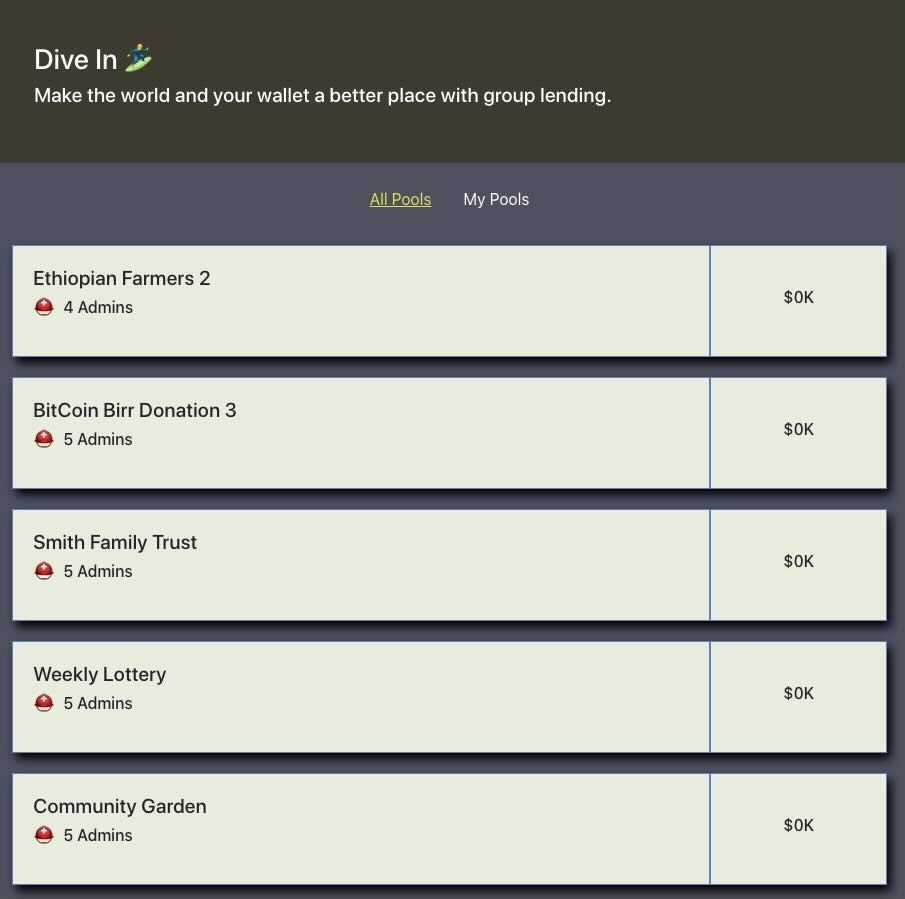SmallStreetDAO
A permissionless and transparent non-collateralized community banking service
Project Description
This project aims to provide a non collateralized lending platform that is transparent and community driven.
Motivation
Much of the yield generated in DeFi has been through incentivizing rewards which is unlikely to go on forever. Once these incentives run out, DeFi will need to generate yield through creation of value on-chain and off-chain. We want to enable the DeFi world to connect to the global economy in a way that is transparent and community driven.
One of the most difficult challenges in DeFi is the ability to give non collateralized loans. The crypto world has given rise to a permissionless and trustless system to transfer monetary value. But this very nature has made it challenging for the issuance of credits, which requires a notion of trust. That is why this project set out to create a lending platform that allows liquidity providers to have confidence in their investment.
Key Elements
- Liquidity providers
- FED-DAO
- Auditors
- Insurance mechanism
- Non-collateralized money lending pool (NMLP)
FED-DAO
The DAO-Central is a governance entity in charge of creating and managing NMLP. The main object of the FED-DAO is to create transparency and guarantee safety around the workings of the NMLP.
The NMLP is a distinct entity that pools funds from Backers and Liquidity Providers to provide non-collateralized financing to outside entities. It is a general term for something that pools money to lend out to third parties, it could be a bank or a community fund. Each NMLP is unique and has a distinct governance system. It could have a certain number of admins or it could be run as a DAO.
The FED-DAO will build and or approve a variety of frameworks for the creation of NMLP’s.
Auction mechanism
To ensure only trustworthy and high quality lending pools are created, entities seeking to create a NMLP will need to bid for the right to create a pool much like the mechanism used in polkadot to lease a parachain. Proposers will need to get community support and backers in the form of staking a token. The ones that get a large amount of support will be able to create a pool. Proposers that have gotten off-chain lending licenses will be used as an additional metrics to judge the creation of NMLPs. The staked tokens will serve multiple purposes. It provides the first line of defense to recoup some money to pay back the LP’s into the pool. It also prevents the creation of multiple such pools.
An organic way for getting the tokens needed to fund the creation of a pool will be to have community support that will provide the token on behalf of the proposers. This will incentivize proposers to have a careful thought out roll out plan.
Auditing Mechanism
To provide transparency for LPs to give money, the Fed-DAO will be inspecting the practices of the NMLP. Inspired by the goldfinch project, the Fed-DAO will enlist auditors to audit the off-chain lending practice of the NMLP. Auditors are rewarded in the Fed-DAO token and are randomly selected to prevent colluding. The report from the auditors will be used to create a risk profile for the NMLP’s
Insurance mechanism
To provide safety guarantees for LP’s, the FED-DAO will have a couple of systems in place to safely return funds to users Each NMLP will pay a certain fee depending on the risk profile that will be used to pay LP's. Should a NMLP become insolvent, the fees will be used to payout the LP’s
Use case #1 Create decentralized banking in developing countries that are willing to give out banking licenses. Get the necessary work done to get a banking license in the country and apply to create an NMLP. Then this entity will be funded by the DeFi community.
Use case #2 A group of people want to create a trust that they want to use to fund a certain project that is promising or they find valuable. They raise a community of backers that want to see this project succeed. They create NMLP and get access to LP’s to further grow their project.
How it's Made
This project uses React with Redux for the frontend and the smart contracts are written in Solidity. We used Hardhat with Ethers for testing and deploying the smart contracts. We called the smart contract methods directly from the Web3 layer. We hacked an existing multi-sig wallet from ConsenSys into fitting our use case for approval based pools.


